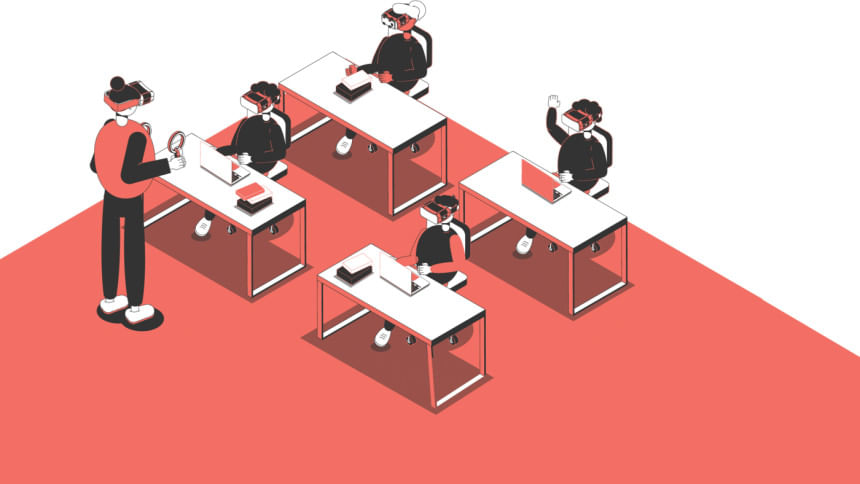AI in the Classroom Friend, Foe, or Future?

A quiet revolution is reshaping classrooms not through protests or policy shifts, but through the soft glow of laptop screens. Artificial intelligence, once science fiction, is now an everyday presence in education. A report by the U.S. Department of Education, Artificial Intelligence and the Future of Teaching and Learning, notes that AI's true potential lies in creating adaptive, personalized learning experiences. Yet, this powerful ally comes with a paradox.The All-Knowing AllyA 2023 survey b...
A quiet revolution is reshaping classrooms not through protests or policy shifts, but through the soft glow of laptop screens. Artificial intelligence, once science fiction, is now an everyday presence in education. A report by the U.S. Department of Education, Artificial Intelligence and the Future of Teaching and Learning, notes that AI's true potential lies in creating adaptive, personalized learning experiences. Yet, this powerful ally comes with a paradox.
The All-Knowing Ally
A 2023 survey by Tyton Partners found that 27% of students regularly use generative AI tools, compared to just 9% of instructors. Nearly half of students have tried AI writing tools, while 71% of instructors have never touched them. For students, AI can be a remarkable collaborator by breaking complex topics into digestible insights, generating essay ideas, or jump-starting creativity. It democratizes access to knowledge and turns curiosity into exploration beyond classroom walls.
AI's adaptivity is its greatest strength. Unlike fixed educational software, AI-powered tutoring systems can gauge how a student solves a math problem and give step-by-step feedback, much like a human mentor. By reducing frustration and customizing learning paths, AI promises a level of individual attention that traditional systems rarely achieve.
The Perils
But there's a dark side to this convenience. When students delegate the thinking by asking AI to write, paraphrase, or problem-solve, they skip the intellectual struggle that builds reasoning and resilience. Over-reliance risks eroding the fundamentals: structuring an argument, researching authentically, validating sources. The more we outsource cognitive effort, the more critical thinking and creativity begin to weaken.
Forging Digital Wisdom
Banning AI is not the answer. It would be as futile as banning calculators or the internet. Instead, schools must build a digital constitution with clear policies defining ethical use. Students should know where assistance ends and academic dishonesty begins. Using AI for grammar correction or brainstorming? Fine. Submitting AI-written essays? Fraud.
Teachers, too, must evolve into digital mentors. Professional development should focus on understanding AI's mechanics, benefits, and limitations so educators can model responsible use instead of fearing it.
Beyond the Algorithm
The ultimate goal is to shift education from what students know to how they think. Integrating digital citizenship and AI ethics into core curricula can help students recognize algorithmic bias, question outputs, and see AI as a tool, not a crutch.
Around the world, countries are already experimenting with AI-enhanced classrooms. In China, Squirrel AI customizes every math question to each learner's pace. In the U.S., Khan Academy's Khanmigo guides students through problem-solving rather than simply giving answers. These tools help teachers by automating grading and identifying learning gaps, freeing them to focus on mentorship and creativity.
But the balance is delicate. The World Economic Forum warns that as machines grow smarter, emotional intelligence, empathy, and ethical judgment will define human success. AI can teach faster; only humans can teach why.
The Bangladeshi Context
For Bangladesh, the challenge is to make AI an enhancer, not a substitute. Smart classrooms could personalize learning across urban and rural schools, reducing disparities. Yet, technology must never eclipse the teacher's role in nurturing curiosity and compassion. Training programs for educators, equitable access to digital tools, and localized AI platforms that understand the Bangla curriculum will be essential.
Man with Machine
AI is already seated in our classrooms, not as a rival, but as a partner. The future of education lies not in choosing between man or machine, but in learning side by side. The real revolution will not be technological, but philosophical: redefining what it means to be educated in an age where knowledge is instant, but wisdom still takes time.